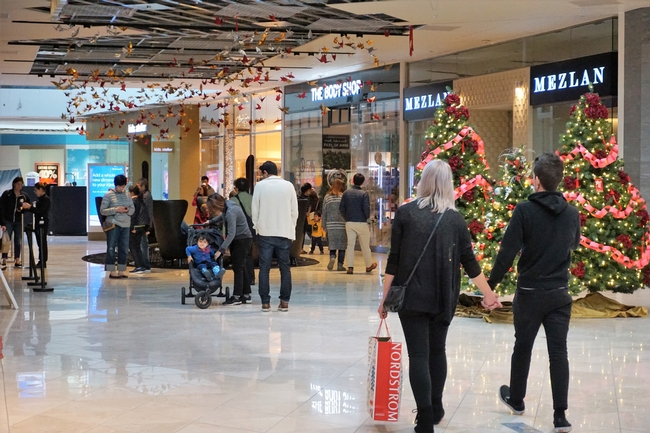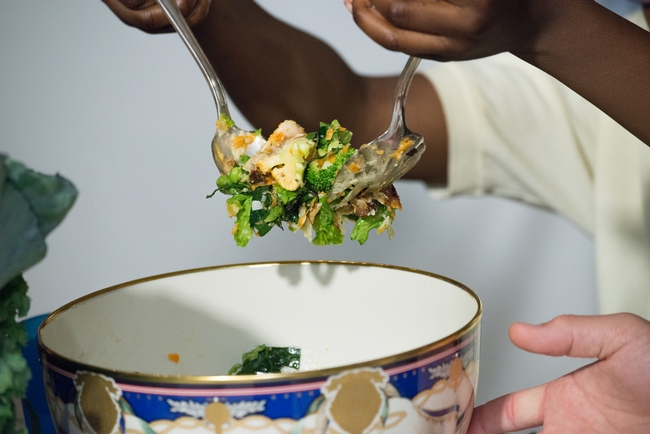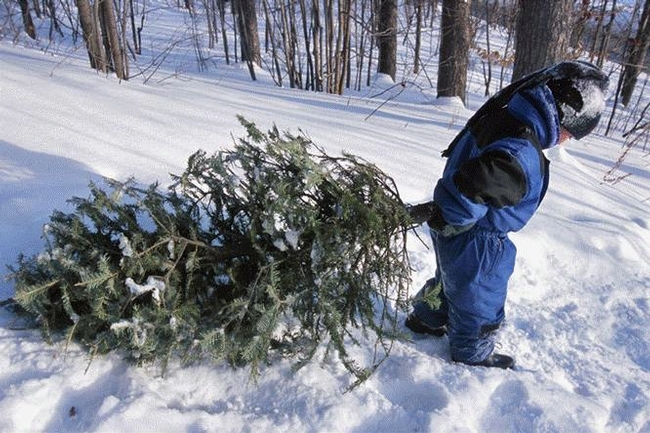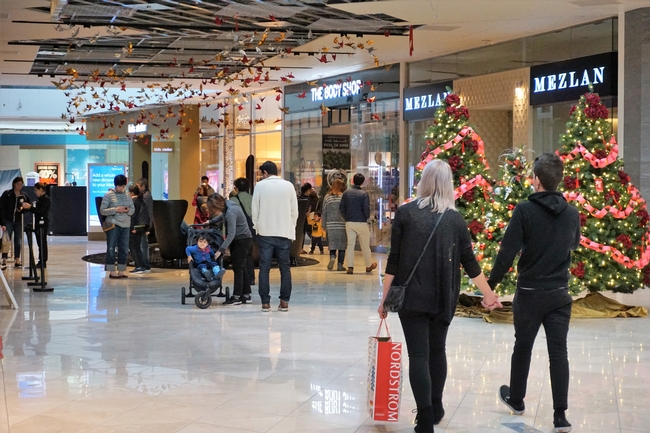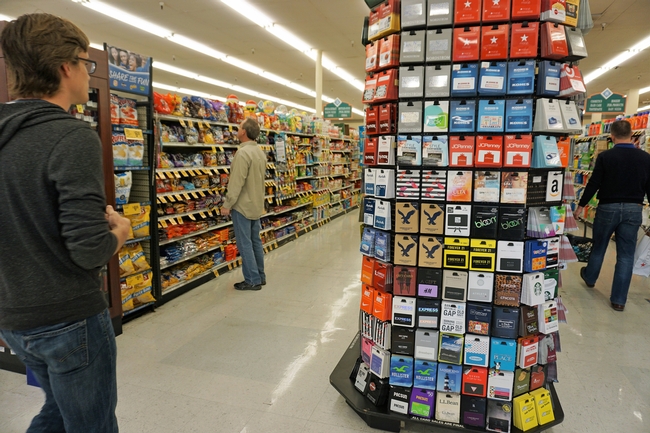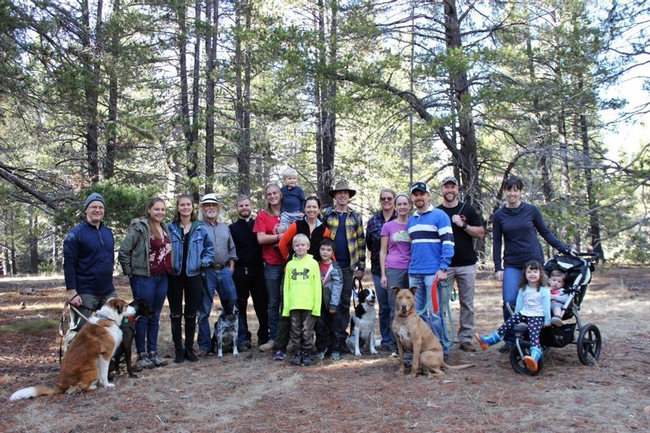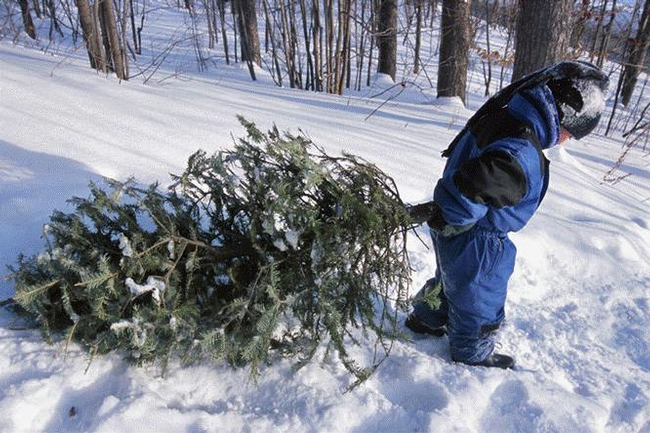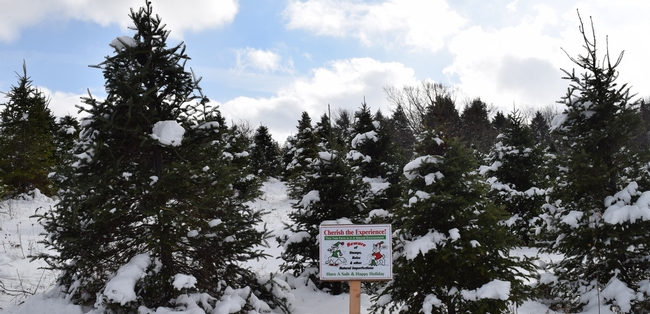Posts Tagged: Christmas
Best wishes for holidays filled with joy, and free of debt and injury
The end-of-year holidays are a perfect time to enjoy family, gifts and food. It's time to laugh, relax, cook and eat the most delicious meals of the year.
Unfortunately, it can also be a time when excess can put your health and finances at risk, leaving you to begin the New Year with debt, stress and anxiety.
Experts with UC Cooperative Extension have practical advice to make the festivities joyful and worry-free. They also provide some simple guidelines to select toys for children with maximum fun and minimum heartache.
Don't go into debt
Shopping is a temptation all year, but during the holidays even conservative shoppers can be seduced into spending too much. In the United States, the average shopper will spend $885 on gifts, according to Gallup.com. For that spending, UCCE experts recommend shoppers avoid making purchases on credit.
Patti Wooten Swanson, UCCE nutrition, family and consumer sciences advisor in San Diego County, believes using a credit cards encourages over spending. Before you know it, the debt will begin to acquire interest, the interest continues to grow, and the purchases become substantially more expensive.
She suggests shoppers establish a budget, think of the people you would like to give gifts, and determine the amount of cash available for each of them before heading to the store.
“Organizing the expenses is very important for people at all income levels to learn to manage money, reach financial security and use their economic resources to acquire what is really important for you and your children,” Wooten Swanson said.
Following are recommendations for using a credit card:
- Don't use a credit card to make a purchase if you don't have the funds to pay it off at that moment.
- Understand that the actual cost of interest can vary greatly, from zero percent for a limited time up to 30 percent. Pay all charges at the end of the month to avoid paying interest.
- Avoid paying only the minimum payment on your credit card, as creditors may then consider you “high risk” and increase your interest rate.
- An advantage of paying with a credit card is the security of not having to take cash with you shopping.
Remember, spreading holiday cheer doesn't require spending a lot of money. There are also treasured gifts, such as those that are homemade, that will persist in the recipient's memory because they come from the heart.
Eat everything, but in moderation
The holidays hail the arrival of many rich dishes, such as tamales, roasted meats and an array of chocolates, cookies and desserts. Many of these foods require a great deal of preparation and are only available at this time of year, increasing the temptation to eat them. But, they often contain a significant amount of salt, sugar and fat.
“Everybody knows we eat because we have to nourish our bodies, but we also eat for pleasure, to socialize or because we enjoy the flavors of the foods,” said Lorrene Ritchie, director of the UC Agriculture and Natural Resources' Nutrition Policy Institute. “Sometimes what we like eating isn't the most healthy, and it's important to know that you don't have to feel guilty and renounce all foods that are unhealthy. Just be sure that most of the time you and your children opt for healthy foods.”
Following are a few suggestions from UC ANR experts can make the holiday eating and playing healthier and safer.
Drink water
During the festivities, we can allow ourselves to enjoy a sugary drink now and then, but always drink water to quench thirst.
“To work off one can of soda, you'll have to walk a few hours. Calories don't burn off very rapidly with physical activity,” Ritchie said.
Salads at your parties
Salads are very healthy, and the more colorful, the better. Each vegetable of a different color contains different nutrients.
“Latinos love fruit. I believe we eat enough fruits,” said Margarita Ramirez Schwartz, UC Cooperative Extension nutrition educator in San Diego County. “But we don't consume as much vegetables, and above all, raw salads.”
At your parties, always serve salads. If you don't have time for salad preparation, opt for convenience products like packaged vegetables and greens that are pre-washed, pre-cut and ready to serve.
Dance
A family dance creates timeless memories. There is no grandparent that can decline when a granddaughter wants to dance. Among Latinos, dancing is part of the culture. Be it salsa, samba, huapango or merengue, any rhythm will help you stop eating, have fun and improve your health.
“The key is to realize that exercise is as important for your health as eating and sleeping,” Ramirez-Schwarz said. “We all want to live for many years, and spend those years enjoying good health. No one likes to be sick and physical activity is part of illness prevention.”
Toys
The joy of Christmas and Epiphany for children often takes the form of new toys, which entertain and spark imagination and creativity. Parents want their children to be happy and have the opportunity to learn by playing with safe toys. Alas, it doesn't always work out this way.
In 2016, there were 240,000 injuries related to toys, according to the Consumer Product Safety Commission. Toys usually appear harmless, but children with injuries caused by toys arrive at hospitals every year. WATCH (World Against Toys Causing Harm, Inc.) is a non-profit organization that monitors toy safety and compiles a list of harmful toys. For example, the leash on a wooden dog can cause strangulation. The lighted eyes that detach easily from a stuffed unicorn can choke a youngster. A toy rifle that shoots plastic disks can hit another child in the eye.
UC ANR experts recommend that you choose toys that will hold a child's interest, taking into account the child's age, fine motor skills and preferences. A toy that is too advanced or too simple could be used in the wrong manner and cause accidents. Think big when choosing toys. Each small piece must be larger than the child's mouth to prevent harm.
- Carefully examine the toys made of painted metal. There are some made overseas that can contain high levels of lead.
- Make sure the toy doesn't have small parts on which a child can choke or that can put younger children in the household at risk.
- Avoid toys that are old and used because they may not comply with current security rules or they may be worn out, break easily and be a danger to children.
- Look for toys with a solid structure. You do not want to give a toy to children that can break easily.
- To prevent cuts, check to be sure the toy doesn't have sharp points or edges.
- Avoid toys that make a lot of noise that could damage the child's hearing.
- Be sure activity books and art supplies are nontoxic.
- Give the toy with batteries, if needed, so that the children won't be frustrated when they receive the gift.
Finally, remember that there is no better gift to children than your time. The toy will be forgotten shortly, but the time that children spend with their families will create life-long memories.
Read the Spanish version of this story.
Can harvesting Christmas trees help the forest?
California forests are overstocked with conifers, and California residents want to decorate their homes during the holiday season with Christmas trees. The smart harvest of Christmas trees can kill two birds with one stone, according to UC Cooperative Extension forestry advisor Susie Kocher. Kocher spoke to Capital Public Radio reporter Ezra David Romero about the prospect of thinning the forest by taking home trees.
"It's a great win-win solution," Kocher said. "You get the public out in the forest, you do good work reducing the density of trees."
Kocher, who lives in Lake Tahoe, holds a family Christmas tree harvest party every year. With $10 permits from the Lake Tahoe Basin Management Unit, they trek through snow to select their trees. This year the management unit sold 2,000 permits. Kocher believes the program could be ramped up to further benefit forests.
“By removing some of the smaller trees, we are doing some of the work,” Kocher said. If left in place, the small trees grow larger, and more human resources, equipment and funds are needed to remove them. Moreover, the income from permit sales can be used for other forest-thinning projects.
However, some foresters are skeptical that harvesting Christmas trees is a realistic solution to management of California forests.
“It's great to have the masses come up during the holiday season full of mirth and cheer,” said Joseph Flannery with the Tahoe National Forest. “But I don't think there's the infrastructure in place to really make a dent in the hazardous fuels reduction needed.”
This story was also covered for KTVU Fox Channel 2 in the Bay Area by Lisa Fernandez.
“You need a 4-wheel drive, and yes, you trudge through snow,” Kocher said. “It's not for everyone. But for those who want that adventure, it's super fun. I do it because I don't think there's a substitute for a real tree in the house. And we always turn it into a family party.”
Besides, she said, “I feel good about removing excess small trees.”
Six tips to make gift cards a great present
For the 11th year in a row, the most popular item on holiday wish lists is gift cards. According to a 2017 National Retail Federation Survey, 61 percent of respondents wished for gift cards, while 55 percent listed clothing and accessories and 39 percent would like books, music or movies.
“In the past, gift cards may not have seemed like a very thoughtful gesture,” said Patti Wooten Swanson, consumer sciences advisor with UC Cooperative Extension in San Diego County. “But today, it's what people want.”
Wooten Swanson has a Ph.D. in consumer science from Texas Women's University in Denton, Texas. She is the author of a seven-part series of financial caregiving publications and is co-chair of the UC Agriculture and Natural Resources Money Talks workgroup, which created a Money Talks website that helps teens and young adults learn to manage their finances.
Gift cards are subject to several consumer protection laws. The federal government mandates that retail gift cards (for a specific merchant or company) and bank-issued gift cards are valid for five years from date of purchase. In California, state law stipulates that most gift cards cannot expire or charge a service fee.
A survey by Consumer Reports found that 10 percent of gift card value typically goes unused. The magazine suggests cash or a check are great alternatives, but Wooten Swanson says she still sometimes opts for gift cards.
“Cash can tend to be used for everyday things,” Wooten Swanson said. “If I want my dad to enjoy a meal at his favorite restaurant, I would give a gift card for the specific restaurant.”
Wooten Swanson offers the following suggestions for ensuring successful gift card experiences:
- If you receive a gift card, use it as quickly as possible. If the retailer goes out of business, the card will have no value. “Also, it's easy to misplace or forget about the card,” Wooten Swanson said.
- Consumers' first choice when selecting gift cards should be those offered by specific retail stores (and their affiliates) or restaurants, Wooten Swanson recommends. “Generally, there are no fees for purchasing them either at the retail outlet, online or at a gift card kiosk in the grocery store,” she said. “The card is valid for at least five years and, by law, no inactivity fees can be charged during the first 12 months.”
- Before buying the gift card, Wooten Swanson suggests looking carefully at the back to be sure that the hidden card number that is usually underneath scratch-off ink has not been exposed. “To steal the value on cards, thieves can copy down the hidden code number at the store. After the card is purchased and funded, the thief can use the code for online purchases, making the card worthless for the person who receives the gift,” she said.
- Always include the store receipt in the gift along with the card. If the gift card is lost or stolen, the recipient can call the company to see if it can be replaced.
- Only purchase gift cards from sources you know are reputable. Some websites allow consumers to buy gift cards at a discount and sell unwanted gift cards at an amount below the face value. “You want to be dealing with a known company to be sure you're getting the real thing,” Wooten Swanson said. She recommends consumers interested in discounted gift cards instead visit big box retailers like Costco or Sams Club, where packets of gift cards are available at a discount.
- Carefully read the conditions attached to bank or credit card company gift cards. They can be used almost anywhere the recipient would like to spend the funds, but most charge a fee to purchase the card and, after 12 months of inactivity, can charge a monthly fee by reducing the balance on the card. “This year many restaurants and retailers are reward those who buy the card with a BOGO bonus. The bonus gift cards obtained often do have an expiration date,” Wooten Swanson said. “Some may not be redeemable immediately.”
The smart harvest of Christmas trees leads to a healthier forest
Most California forests have too many trees, so carefully selecting pines, cedars or firs in natural areas to enjoy for the Christmas season is good for the mountain landscape.
“It's a great idea to cut down young trees for fire safety and vegetation management,” said Susie Kocher, UC Cooperative Extension forestryadvisor in the Central Sierra. “The earlier you do it, the less work it is to manage the trees in the long run.”
Kocher lives and works in Lake Tahoe. Every year, she gathers her family and friends to find forest-fresh Christmas trees in the Lake Tahoe Management Area. Of the 18 national forests in California, 11 allow Christmas tree cutting with the purchase of a $10 permit. (See the list below.) People who own mountain cabins or other forestland may invite family and friends to help thin trees on their personal property, which can then be used for the holiday season. However, never harvest trees on public or private property without permission.
“We have a lot of small trees on public and private forest lands because of fire suppression,” Kocher said. “They're all competing with one another and many will ultimately die. A smart harvest of Christmas trees can improve the forest by helping with thinning.”
People with permits to cut down Christmas trees in national forests must follow strict guidelines. Follow the same guidelines on private land to ensure a smart harvest. Before chopping down the tree, be sure it is within 10 feet of another living tree, the trunk is no more than 6 inches in diameter and the stump left behind is no higher than 6 inches off the ground. Some national forests limit the harvest to certain tree species.
Despite committing to these guidelines when obtaining a permit, Kocher said she has seen some Christmas tree harvesters make ill-advised choices.
“Some people are too lazy to find a good tree and will cut the top off a large tree,” Kocher said. “You can be driving around and see what looks like a poor old Dr. Suess tree, which is what grows from the ugly remnant left behind in the forest.”
Such irresponsible Christmas tree cutting has led some forests to discontinue Christmas tree harvesting for personal use.
There has been ongoing debate about whether a fake tree or real tree is more environmentally friendly, but for Kocher, there is no question.
“Fresh real trees are a renewable resource, fake trees are not,” she said. “It's an agricultural product. You can contribute to a local farmers' income or you can help thin the forest. Picking and bringing home a fresh tree, decorating it and smelling it defines the season for me. Without it, I don't think it would feel like Christmas.”
U.S. National Forests in California that allow Christmas tree cutting with a permit are:
- Inyo National Forest
- Eldorado National Forest
- Klamath National Forest
- Lake Tahoe Basin Management Area
- Lassen National Forest
- Mendocino National Forest
- Modoc National Forest
- Plumas National Forest
- Shasta-Trinity National Forest
- Six Rivers National Forest
- Tahoe National Forest
Read more:
'Real' Christmas trees support farmers and the environment
Most real Christmas trees sold in California are raised on farms, creating jobs and boosting the economies in rural areas.
That's just one reason UC Cooperative Extension advisor Lynn Wunderlich encourages the use of fresh-cut Christmas trees during the holiday season.
"This is an age-old debate," Wunderlich said. The American Christmas Tree Association says that PVC used in artificial trees is recyclable. If a household decorates with the same artificial tree for at least four years, the carbon footprint will be smaller than that of a household that purchases a real tree every year.
But the impact goes deeper. Wunderlich points out that artificial trees are mainly made in Asia. They have to travel a great distance to the U.S. compared to an American-farmed tree, eating up natural resources during transport. "Buy American," Wunderlich says.
Besides, there are the transcendent benefits of real Christmas trees. Farmed trees provide open space and wildlife habitat during the off-season, and fill the home with a natural pine scent during holidays.
Their role in sequestering carbon is aided by a production practice used by many farmers, called "stump culture."
"They use the same root system to regrow another tree, so the trees are regenerated," Wunderlich said. "Trees are replanted regularly in other farming culture. Christmas trees sequester carbon. Nearly a ton of carbon per acre of trees, depending on species and number of trees planted on the land."
While artificial trees end up landfills or energy-intense recycling plants, live trees are biodegradable. They can be naturally recycled by composting or shredded to use as mulch. Many communities offer curb-side pickup in the days after Christmas.
While farmed trees can be purchased on tree lots, home improvement stores, even grocery and drug stores, Wunderlich says a trip to a choose-and-cut tree farm is an enchanting family outing. Many Christmas tree farmers also provide food, crafts, activities and visits with Santa.
“Families can visit the farmer year after year as their children grow, so that's part of the experience,” Wunderlich said.
Resources:
The California Christmas Tree Association maintains a directory of choose-and-cut Christmas tree farms around state.
Some National Forests allow Christmas tree cutting with a permit. Read more here.
